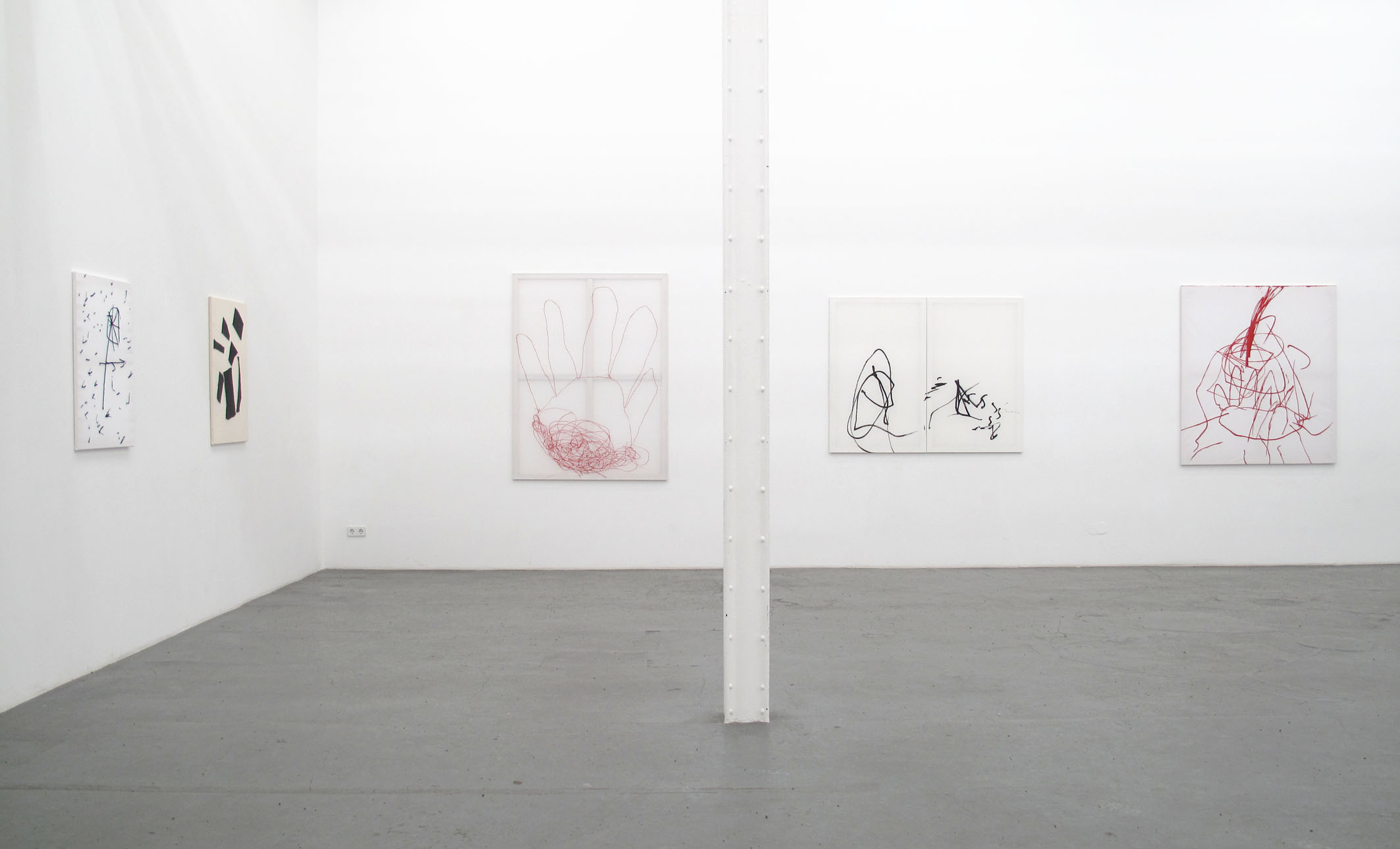
Is this a call for action or the description of an action completed? Is an action’s explicit intent a precondition or is the ‘centre’ struck in passing? In Bea Meyer’s exhibition title, the facts described appear self-evident and their consequences nonessential. The aim is referred to elliptically as a position in space. Where, we are left to ask, is the (dead) centre of something? Who is shooting? And who or what is being aimed at? And what is being shot with, and why?
This series of pictures by Bea Meyer deals with the expressive qualities of the line. The works are based on a selection of designs culled by the artist from piles of drawings in which there was often little more on the paper than lines of varying thickness, the structural traces of colour and rough compositional outlines. Meyer then proceeded to manipulate and materialise the individual lines. By greatly magnifying the drawings, lines become material entities and physically spatial on the stretched fabric: Meyer deconstructs the line to create images that mystify their origin and how they evolved.
The artist refers to these works as ‘transpositions’: in typically time-consuming and intricate techniques, Meyer creates images based on designs that are rendered in only a few seconds. Responding with sensitive confidence to a range of different materialities she playfully exploits the characteristic textures and properties of thread, eyeliner, velvet, leather, wire, paint and marker pen as the subject matter of her images. Dealing with issues of proportion and material, Meyer hypostatizes the minimal in large images that hover between the representational and abstraction.
Based on designs indicative of the inchoate stages in the development of the human brain, these works deal with the intrinsic processes of making art. In contrast to works by trained artists, here, impulse, will, intuition and aptitude interact differently: Bea Meyer, a trained artist herself, transposes drawings by her two children from what is commonly referred to as the scribble phase. This approach enables the artist to create a series of abstract images in which two entirely separate processes of expression converge – to surprising effect.

grey yarn on cottonfabric
65 x 70 cm

red yarn on cottonfabric, layed
80 x 60 cm

red acrylic paint on cottonfabric
80 x 60 cm

different straps and fabrics on cottonfabric
55 x 50 cm


blue marker on paper and fabric
120 x 120 cm

red knit on transparent fabric
160 x 120 cm
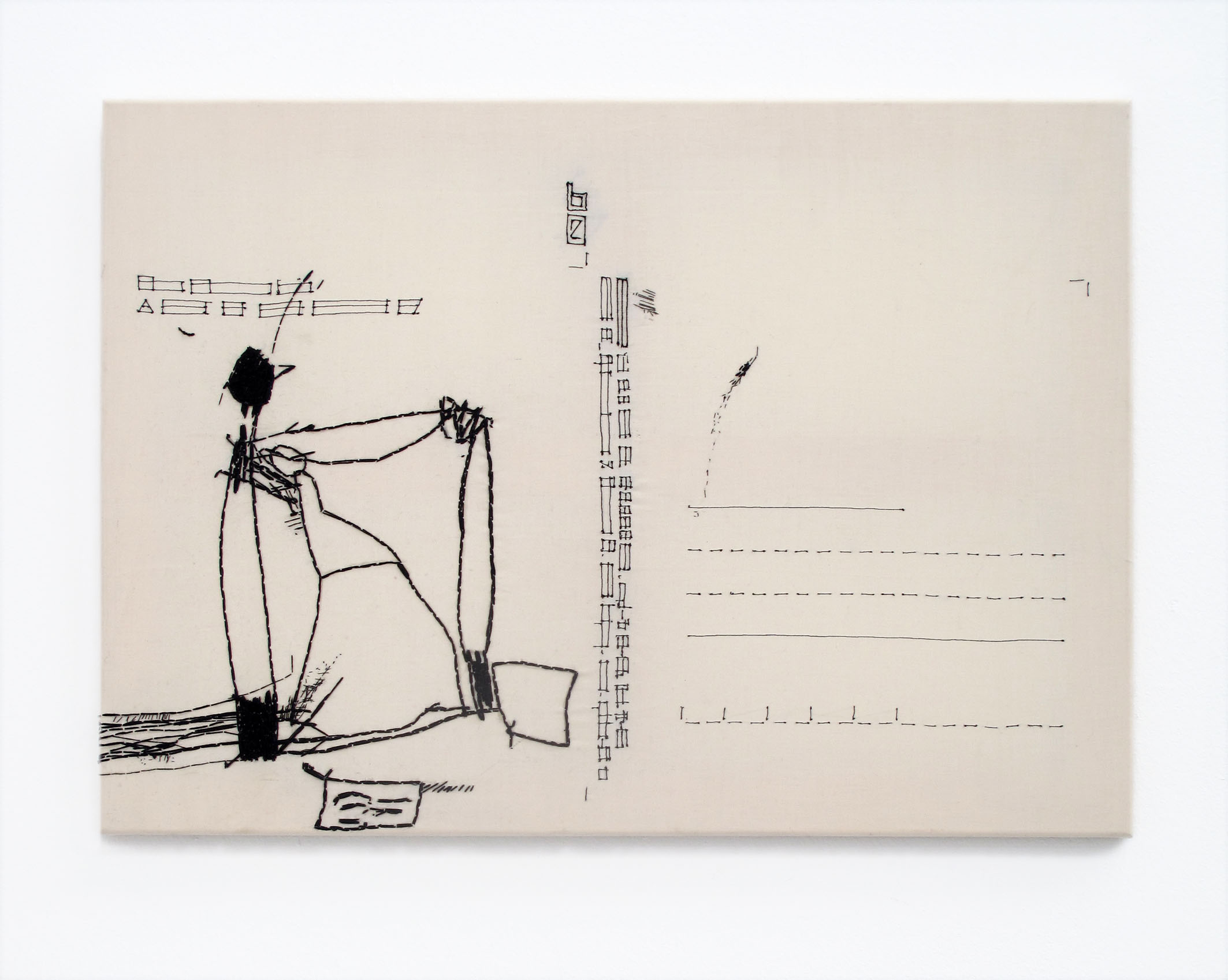
black yarn on cottonfabric
50 x 70 cm
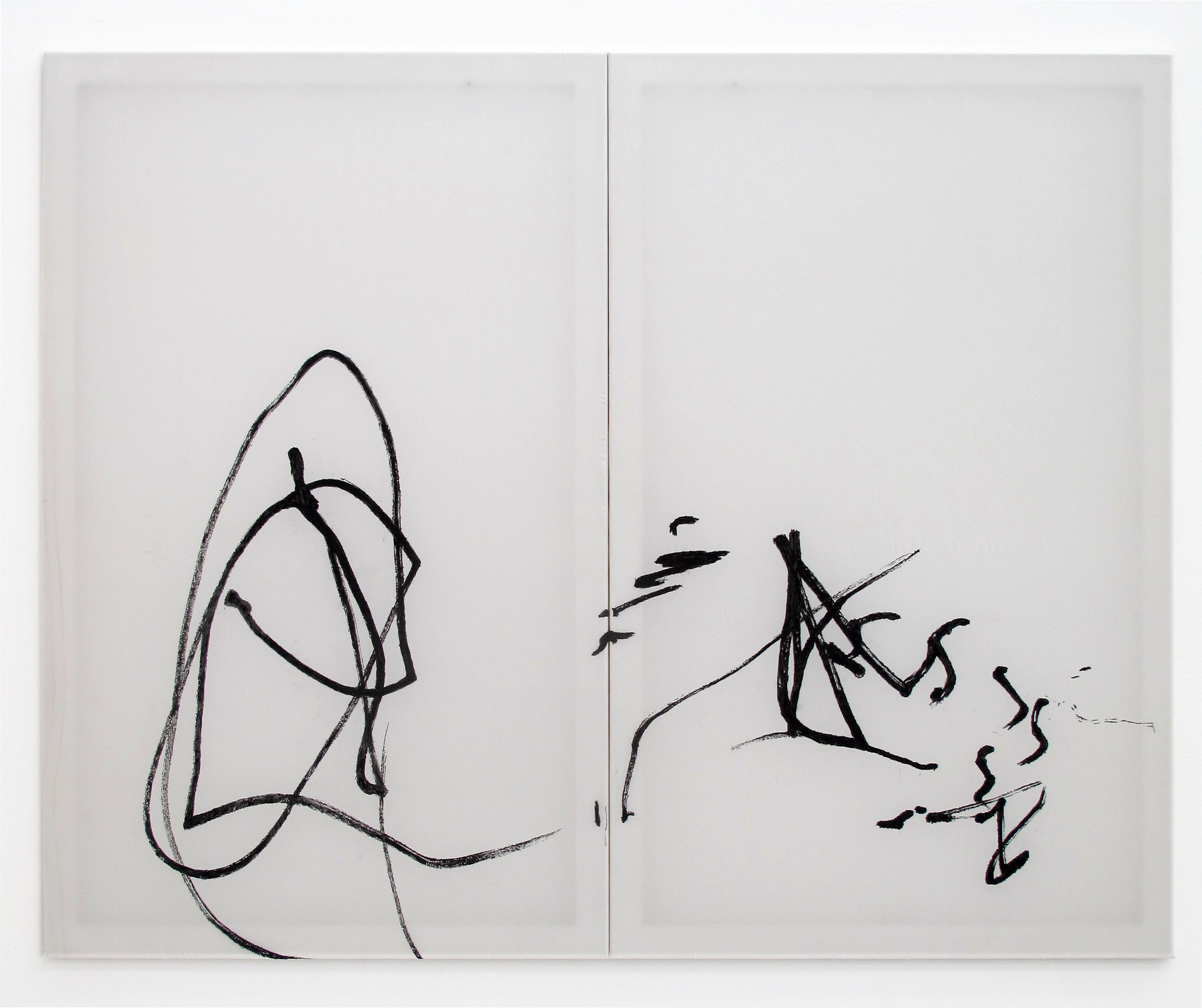
black eyebrow-pen on silk
240 x 75 cm

wire on cottonfabric
145 x 110 cm
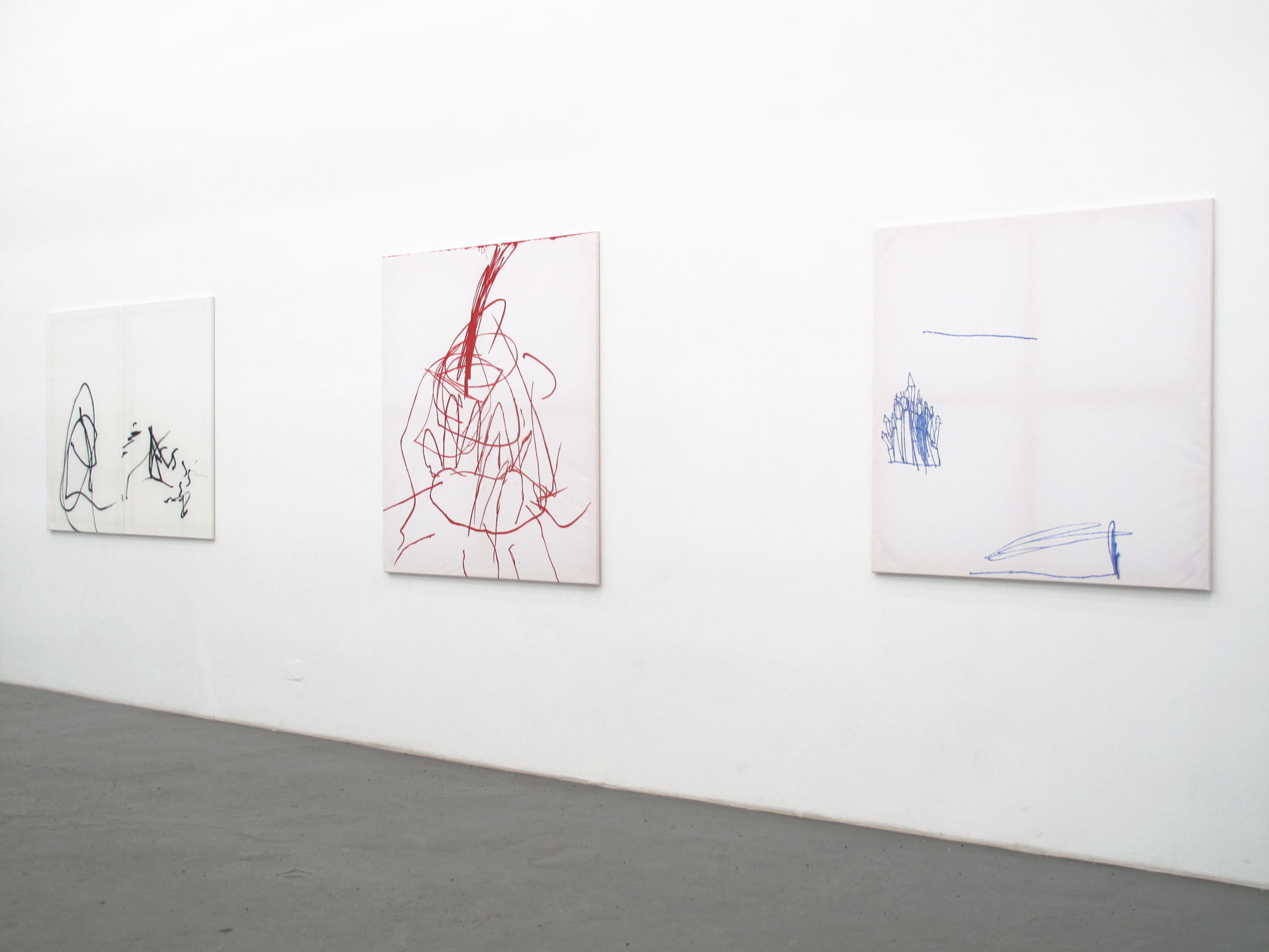
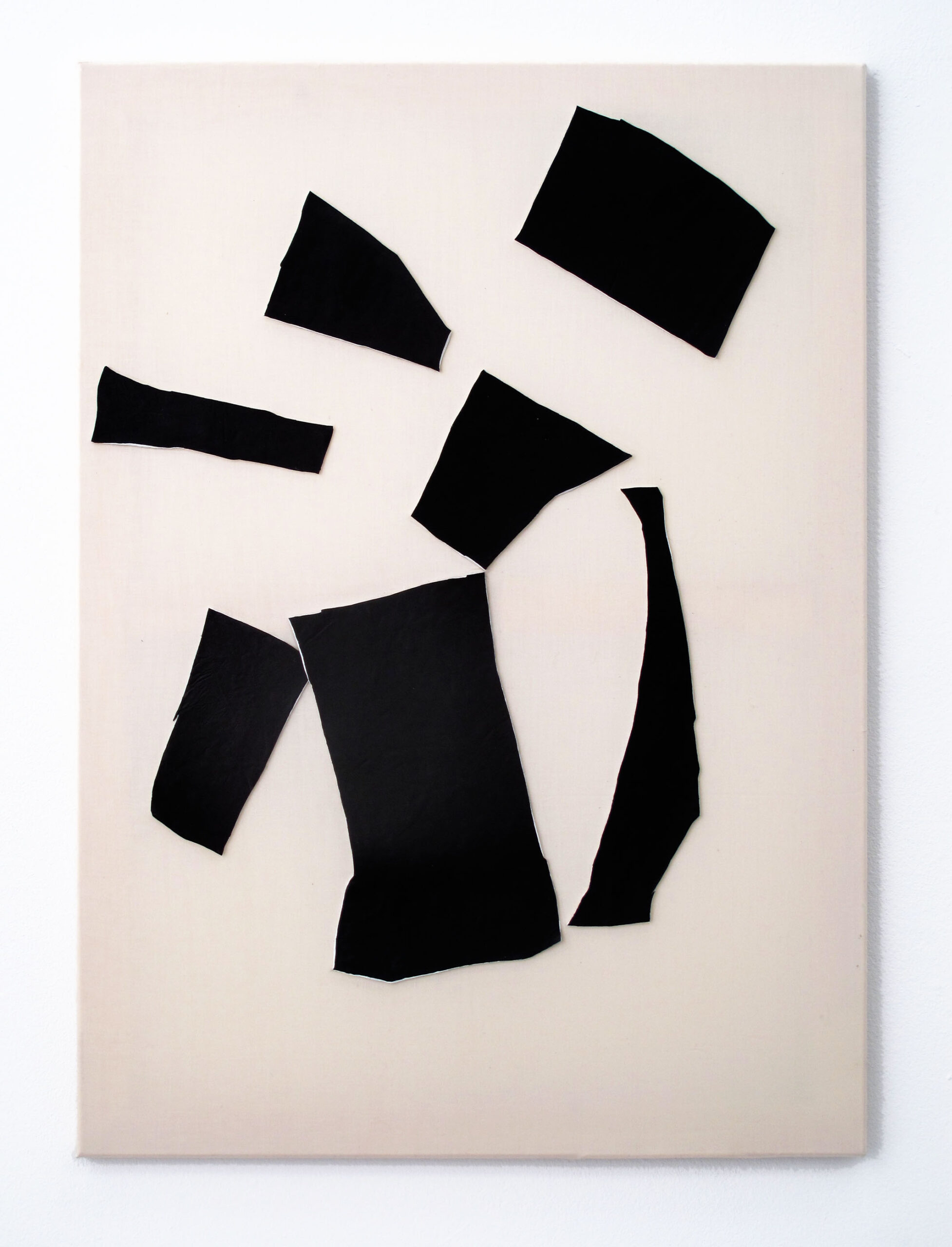
black leather and white colour on cottonfabric
90 x 65 cm

purple velvet and metallic green leatherette on georgette
200 x 65 cm

different fabrics on white organza
65 x 65 cm

Omnigraph and tape cotton fabric
90 x 70 cm
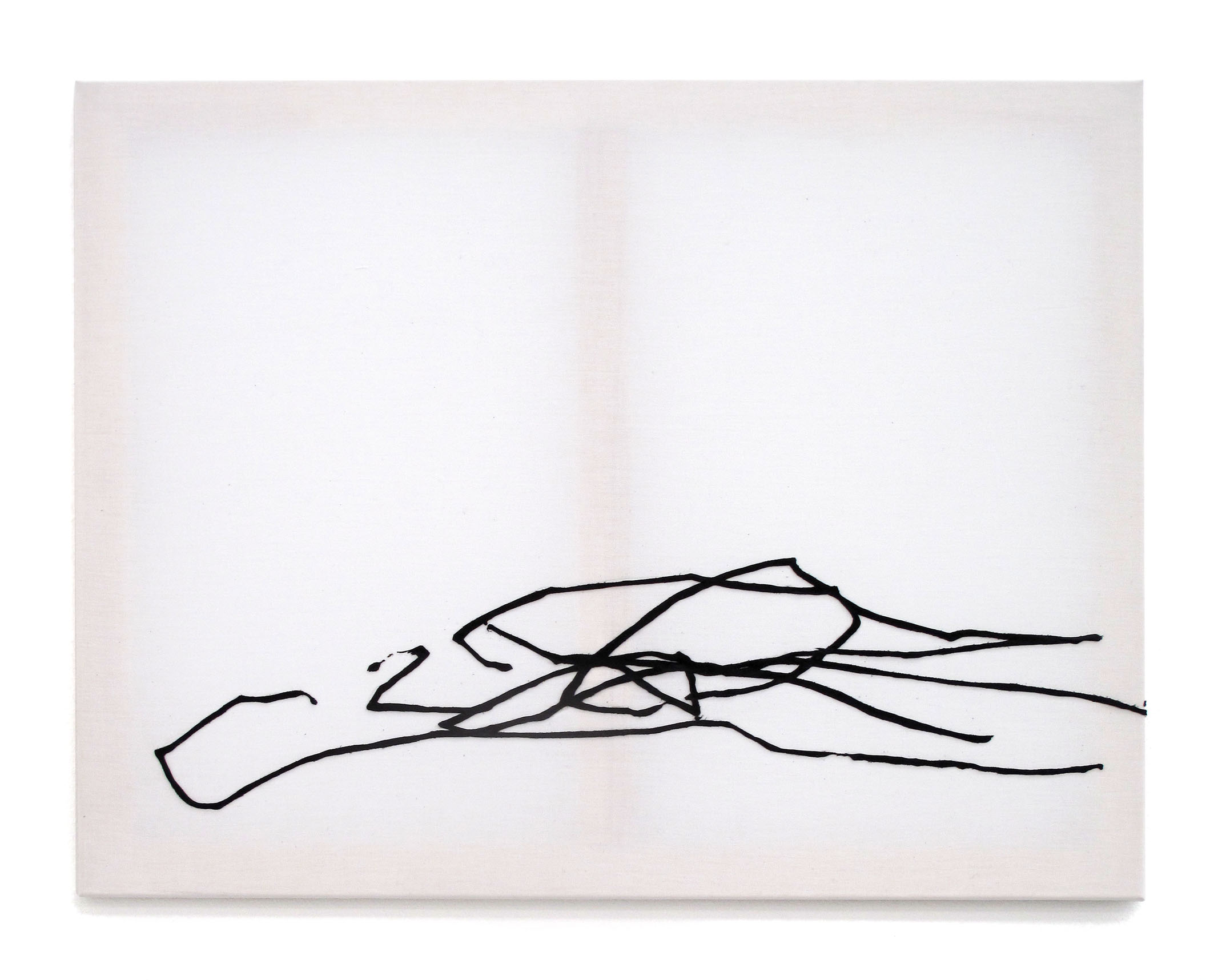
black leather on cottonfabric
65 x 85 cm
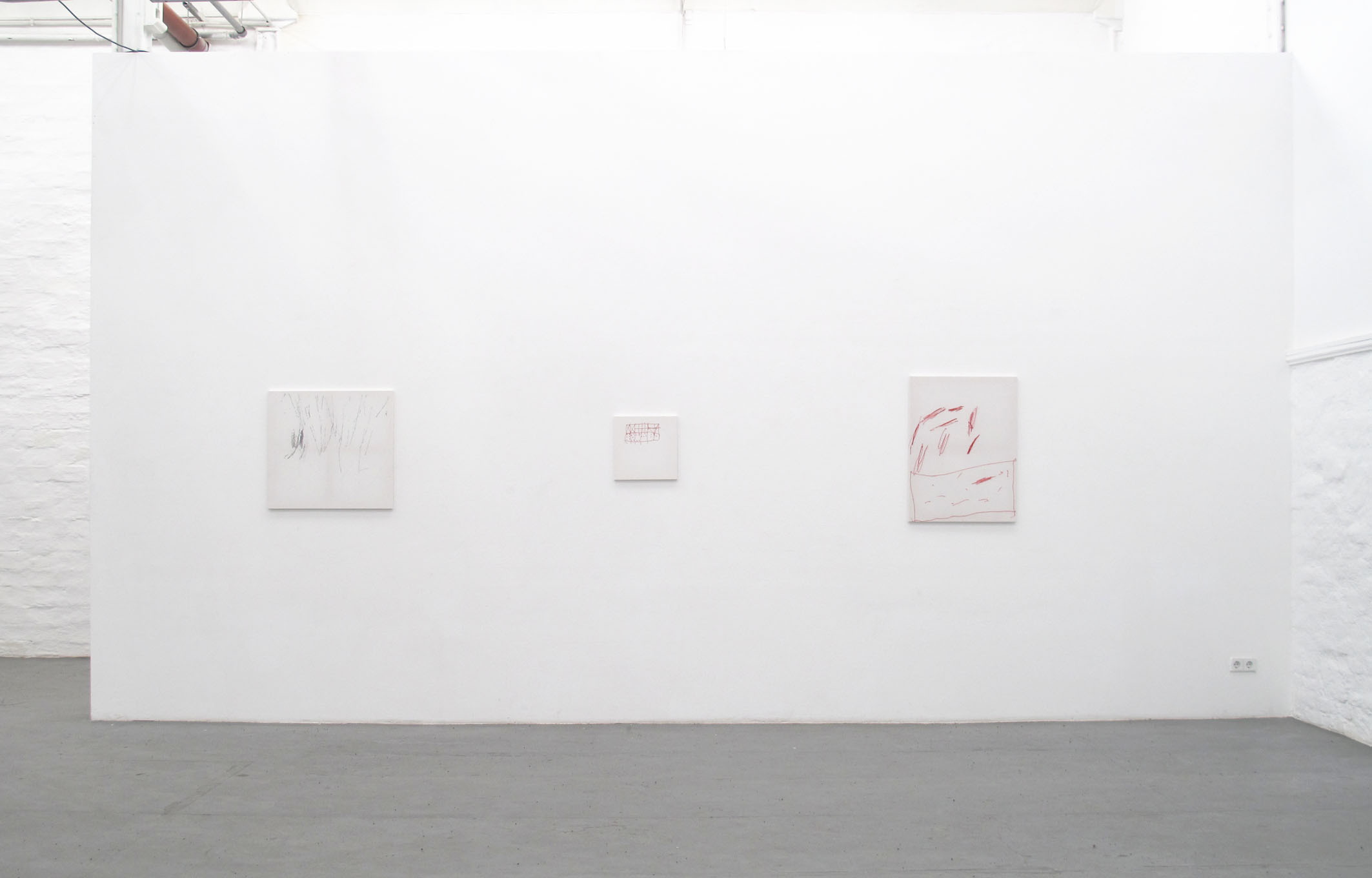
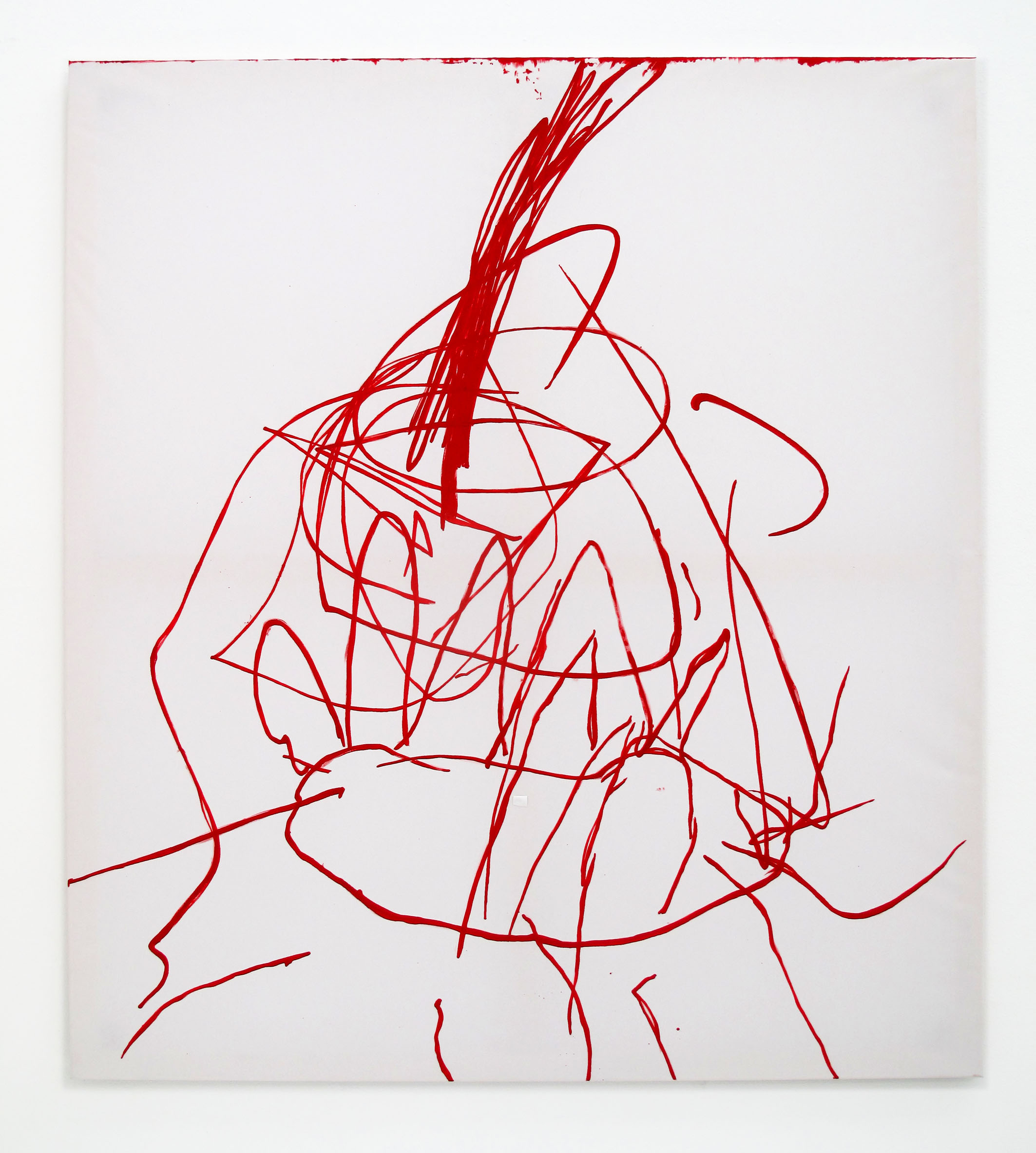
red modelbuiltcolour on paper and fabric
140 x 125 cm